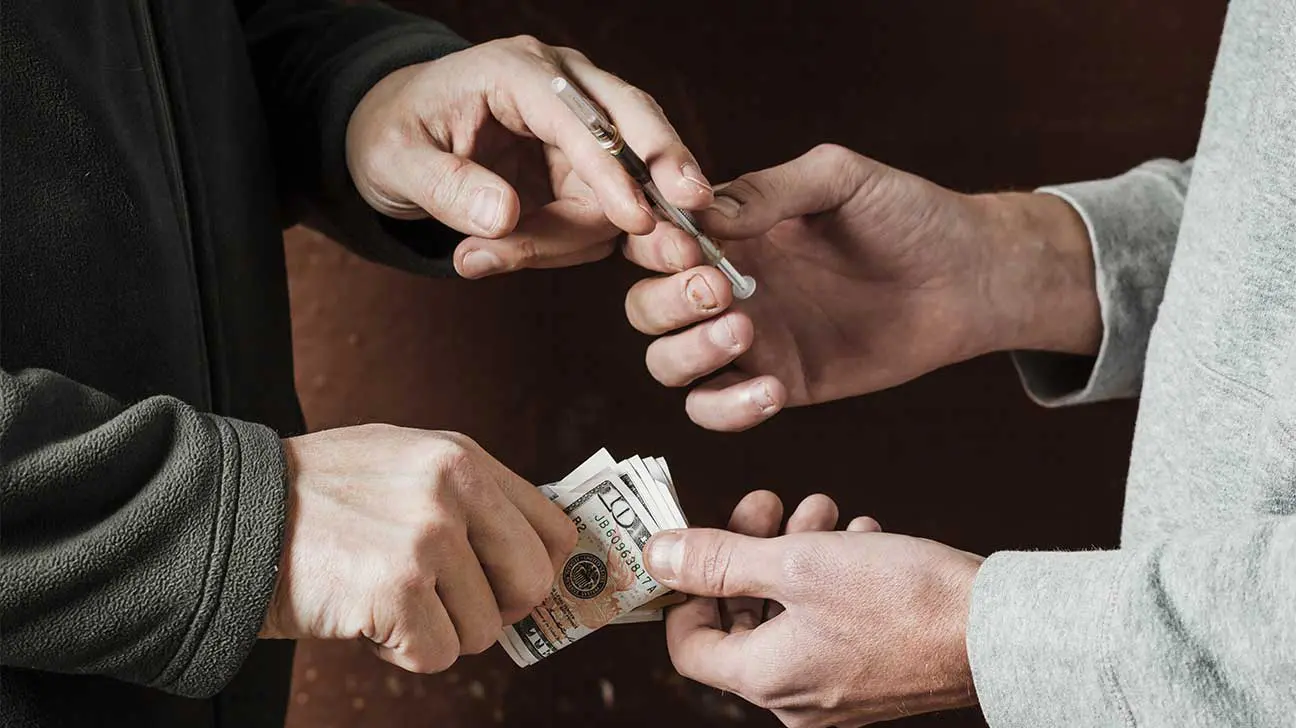
Cocaine is a powerful central nervous system stimulant with a high potential for abuse. Because a person can quickly develop a physical tolerance and dependence on cocaine, addiction can easily develop.
Of course, drug addiction isn’t cheap. This is especially true if someone is abusing cocaine. In fact, a person who is addicted to powder or crack cocaine could be spending thousands of dollars on cocaine use each year.
In addition to the financial cost of the drug itself, substance abuse can lead to a variety of other costs, both literally and figuratively.
A person who is struggling with cocaine addiction may find themselves financially responsible for accidents that occur while under the influence, including car accidents. Plus, severe short-term and long-term effects of cocaine addiction can lead to hefty medical bills.
Safer and more affordable alternatives are available, including drug addiction treatment programs and health services.
How Much Does Cocaine Cost?
While most addictions are expensive to maintain, cocaine is a particularly pricey drug. Between 2016 and 2017, the average price rose from $141 to $153 per gram of cocaine. Additionally, the average purity of cocaine on the streets rose by 2.7 percent.
Cocaine prices have been pretty consistent since 2003, despite changes in purity over time. Because of this average per-gram cost, cocaine addiction can clearly become expensive to maintain. Depending on the frequency of use, the total cost of addiction can vary greatly.
For example, if someone was using a gram of cocaine every month, that’s $1,692 to $1,836 each year. If a person is using a gram every two weeks, the annual cost doubles and becomes $3,384 to $3,672.
These totals are estimates that only factor in drug use alone. If there are additional expenses, such as property damage or healthcare costs, those would also need to be considered.
Cocaine Addiction: How It Develops
Cocaine works by increasing the levels of dopamine in the brain. Dopamine is a naturally occurring chemical that affects our ability to control movement and feel the joy of rewards.
When cocaine is introduced to the body, it stops the dopamine from being recycled, which causes a build-up of the chemical. This effect on the brain’s reward circuit encourages a person to take more of the drug, which can lead to addiction.
The desired short-term effects of cocaine may include:
- extreme happiness
- energy
- mental alertness
- hypersensitivity to sight, sound, and touch
Unfortunately, the symptoms of cocaine withdrawal are more uncomfortable and unpleasant. In order to avoid these symptoms, people may continue abusing the drug. This is another way that addiction can develop.
The Cost Of Addiction
In addition to the financial costs of cocaine addiction, there may be additional prices to pay involving a person’s physical and mental health.
Some of the most costly risks associated with cocaine addiction may include:
- hallucinations
- extreme agitation or anxiety
- difficulty breathing
- high blood pressure
- high body temperature
- irregular heart rhythm
- cardiac arrest (heart attacks)
- seizures
- strokes
If a person is addicted to cocaine, they may also be at a higher risk of abusing other prescription drugs, including prescription opioids and other painkillers. This can easily lead to an increased risk of addiction, overdose, or polysubstance use disorders.
The dangers of cocaine abuse are increased if a person is also taking opiates including OxyContin (oxycodone), Percocet, or Vicodin at the same time. Synthetic opioids like fentanyl and other illicit substances like heroin or methamphetamine may also be dangerous if abused alongside cocaine.
The risk of symptoms that may lead to overdose deaths is also increased if a person is struggling with alcohol addiction, binge drinking, or alcohol abuse in general. Unfortunately, alcohol use and cocaine addiction often go hand-in-hand.
Abusing cocaine on its own is dangerous, but mixing it with other drugs can lead to additional severe short-term and long-term side effects on the brain and body.
Is Drug Addiction Treatment Worth The Cost?
Treatment costs and effective drug addiction treatment is always worth the price.
In addition to long-term financial costs, drug abuse can lead to a wide variety of health-related problems as well as problems in a person’s relationships, work, and other areas of life. For these reasons, sobriety will always be worth it.
Still, even looking at the financial costs alone, drug addiction treatment can easily pay for itself within a year. According to a recent study, non-methadone outpatient treatment programs typically range between $1,132 and $2,099. Currently, methadone isn’t approved to treat cocaine addiction in the United States.
If you know a teenager who may be struggling with cocaine addiction, outpatient programs for adolescents typically range between $1,517 to $3,237.
Alternatively, adult inpatient treatment programs may range from $2,907 to $11,260 depending on the length of the person’s stay, varying treatment options, and the individual’s specific addiction/mental health.
While these numbers may seem high at first, they’re still cheaper than the cost of cocaine for one year to a person who is struggling with cocaine addiction. Financial support may also be available.
Treatment Programs For Cocaine Addiction
Cocaine addiction can be difficult to treat, and the withdrawal symptoms can be potentially dangerous. For these reasons, it’s best to contact a treatment specialist or health care provider to find treatment centers that may be able to help.
Cocaine addiction can be treated in either outpatient or inpatient programs.
Inpatient programs are a more intensive experience, and they’re generally more effective for people who are struggling with severe addiction or physical dependence. With these types of programs, a person will go to a treatment center and stay full-time for several days, weeks, or months while receiving support and resources.
Still, an inpatient program may not be accessible for many reasons. If you have work, school, a family, or other obligations that prevent you from staying at a treatment center full-time, consider outpatient treatment. Outpatient treatment programs consist of a person visiting an addiction center several times weekly to receive treatment.
Currently, there aren’t any medications approved by the U.S. Food and Drug Administration to treat cocaine addiction, but there are a variety of other effective approaches including contingency management (CM) and cognitive-behavioral therapy (CBT).
If you or someone you know may be struggling with cocaine addiction, contact an AddictionResource.net treatment specialist today to find the best treatment center and program.
Addiction Resource aims to provide only the most current, accurate information in regards to addiction and addiction treatment, which means we only reference the most credible sources available.
These include peer-reviewed journals, government entities and academic institutions, and leaders in addiction healthcare and advocacy. Learn more about how we safeguard our content by viewing our editorial policy.
- Drug Enforcement Administration (DEA) — National Drug Threat Assessment
https://www.dea.gov/sites/default/files/2020-01/2019-NDTA-final-01-14-2020_Low_Web-DIR-007-20_2019.pdf - Institute For Defense Analyses — The Price and Purity of Illicit Drugs: 1981-2007
https://obamawhitehouse.archives.gov/sites/default/files/ondcp/policy-and-research/bullet_1.pdf - National Institutes of Health (NIH): National Institute on Drug Abuse (NIDA) — Cocaine DrugFacts
https://www.drugabuse.gov/publications/drugfacts/cocaine - National Institutes of Health (NIH): National Institute on Drug Abuse (NIDA) — Is drug addiction treatment worth its cost?
https://www.drugabuse.gov/publications/principles-drug-addiction-treatment-research-based-guide-third-edition/frequently-asked-questions/drug-addiction-treatment-worth-its-cost#:~:text=Substance%20abuse%20costs%20our%20Nation,can%20help%20reduce%20these%20costs. - U.S. National Library of Medicine — The Economic Costs of Substance Abuse Treatment: Updated Estimates and Cost Bands for Program Assessment and Reimbursement
https://www.ncbi.nlm.nih.gov/pmc/articles/PMC2614666/ - United Nations Office on Drugs and Crime — Heroin and cocaine prices in Europe and USA
https://dataunodc.un.org/drugs/heroin_and_cocaine_prices_in_eu_and_usa-2017


